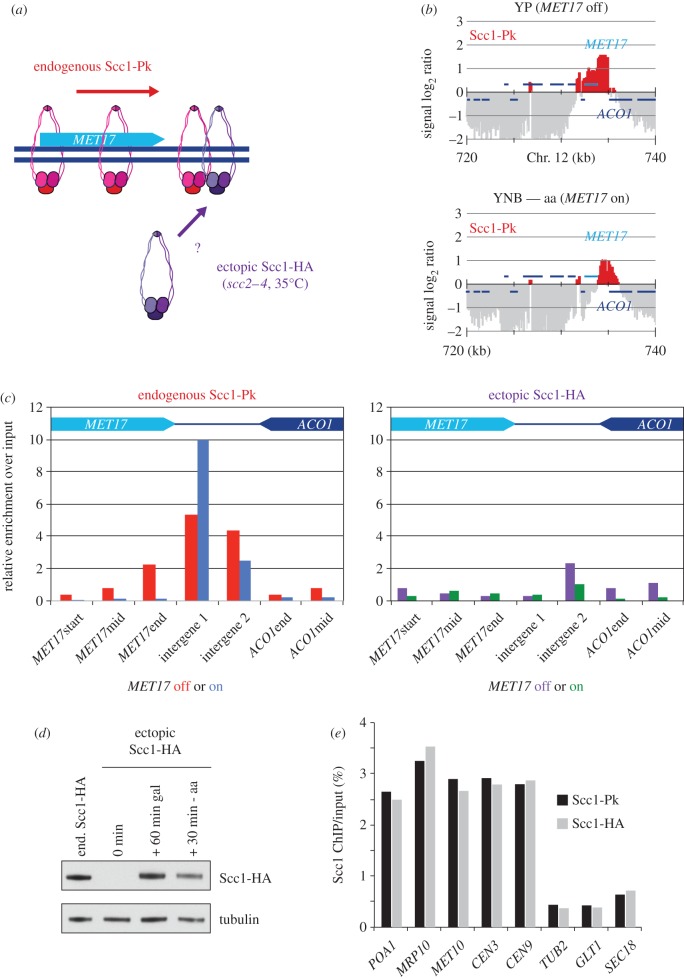Figure 3.
Pre-existing cohesin translocates at the MET17 locus. (a) Schematic of the experiment to compare the behaviour of endogenous cohesin (containing Pk epitope-tagged Scc1) and ectopic cohesin (containing HA epitope-tagged Scc1) that was expressed after cohesin loader inactivation, but before cohesin translocation was induced. (b) Cohesin translocation at the MET17 locus. Cohesin chromatin immunoprecipitation (ChIP) was performed in G2/M arrested cells, before (YP) and 30 min after transfer to medium lacking amino acids (YNB—aa). (c) Only pre-existing cohesin translocates. After 1.5 h following release from α-factor arrest into G2/M, cells were shifted to a restrictive temperature for the scc2–4 allele for 1 h before Scc1-HA expression was induced by galactose addition for one further hour. Then cells were transferred to medium lacking amino acids. Cohesin ChIP was performed against both endogenous (Scc1-Pk) and ectopic (Scc1-HA) cohesin just before and 30 min following amino acids starvation. (d) Ectopic Scc1-HA levels at the indicated times were compared by immunoblotting to those in a control strain in which endogenous Scc1 was fused to the same HA epitope. Tubulin served as a loading control. (e) The efficiency of Scc1 chromatin immunoprecipitation using an HA and Pk epitope, respectively, was quantitatively compared at five cohesin binding sites and three negative control regions.

